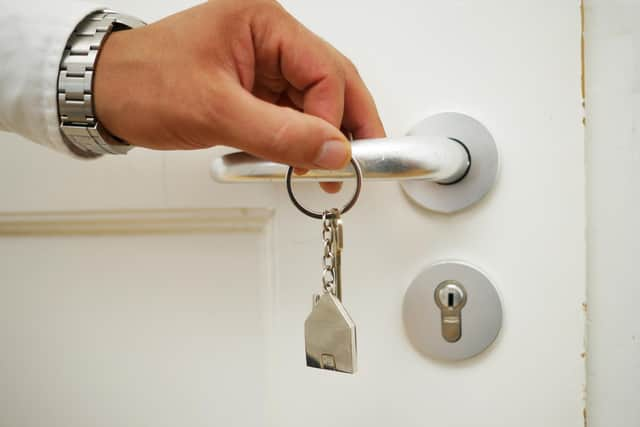New data reveals how much you’ll pay in rent for a home in Fife
and live on Freeview channel 276
The latest figures collated by the Scottish Government chart how monthly rents compare today with 2021 and 2010.
The average monthly rent for a two-bedroom flat is now £649 - up more than £40 on 2021’s £616, and some 34% higher than the £464 charged in 2010.
Advertisement
Hide AdAdvertisement
Hide AdThe 8.2% year on year rise is mirrored for three-bedroom flats which now command monthly rentals fees of £839, up from £778 last year and £563 in 2010.


A one-bedroom flare has risen from £379 in 2010 to £462 last year and currently sits at £492 - but a shared flat of the same size would come in at £392.
The smallest increase has come in the four-bed market which has shown a modest 1.1% rise from £1330 in 2021 to £1345. In 2010, renting such a property would set you back £773 per month.
The figures show Fife remains below the Scottish average - and local agents say the data demonstrates landlords are playing their part in trying to minimise rises in a cost of living crisis.
Advertisement
Hide AdAdvertisement
Hide AdVictoria Stewart, from Premiere Rentals, which operate across the legion, said: “We haven’t really seen the market like this before. It’s very buoyant.
“With the lack of social and council housing available, it has everyone turning to private lets and with the cost of living being what it is at the moment, landlords are also needing to cover their own expenses/mortgage payments so the rents are increasing. It’s a knock-on effect.
“If the mortgage rates continue to rise, the rents will continue to increase or at least level out. “
Jim Parker who runs Fife Properties, and blogs regularly on the property market, said: “While the rental market is continuing to overheat due to the shortage in supply we can see over the last year that rents have been rising less than the current rate of inflation of 11.1% to October 2022.
Advertisement
Hide AdAdvertisement
Hide AdThis shows that landlords and investors are taking positive steps to increase their rents over the last year by what is necessary in order to reinvest in their properties for the future while absorbing some of the increasing costs driven by rising prices.”
He also said that Holyrood had a role to play to support the estate and letting markets.
“The Scottish Government needs to put progressive policies in place to encourage landlords to stay in this sector while implementing a long term social housing strategy to build and increase the supply of affordable council housing for rent which in the medium to long term will see rents stabilise and become more affordable over all tenures,” he added.
Overall, Fife’s year on year rental rise was 5.3% - almost half that of the 10.3%redcored in South Lanarkshire. Dundee and Angus recorded an 8% rise, and Forth Valley 8.7%. Lothian recorded a 6.9%.
At the other end of the scale, Dumfries and Galloway saw a small 0.6% year on year increase.